by Jeff Moravec
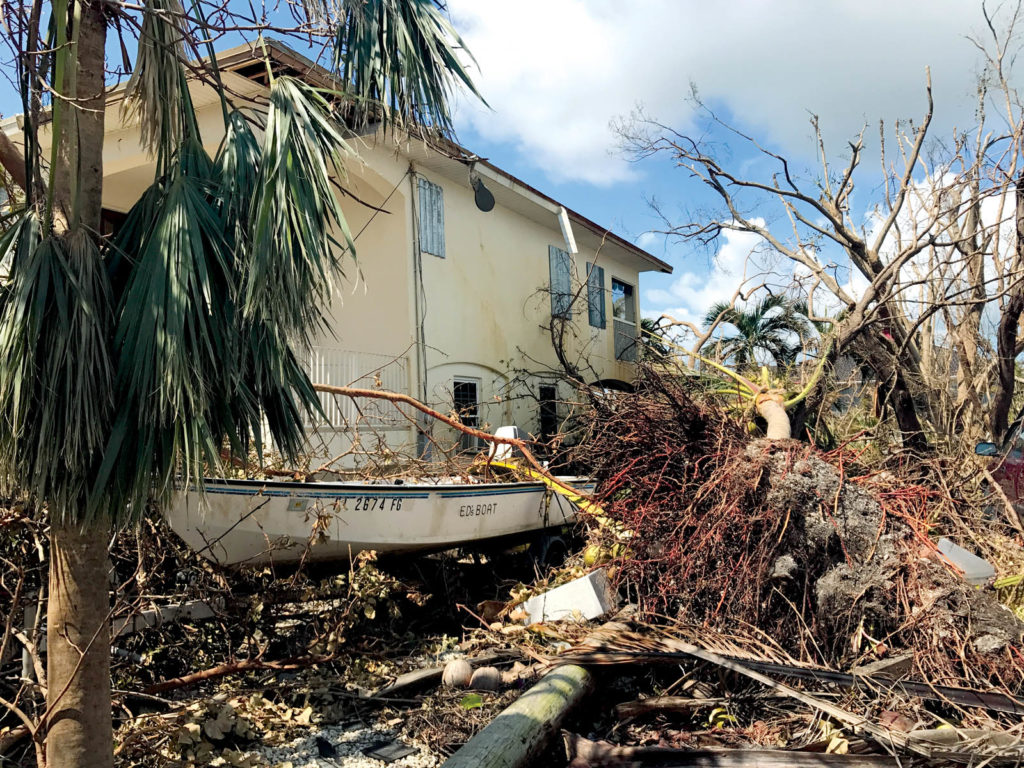
Although extreme events such as fires, floods, hurricanes and other disasters were once considered rarities, they are becoming more common. Business owners need to ask themselves how they would survive such an ordeal—and what they need to do to prepare for the possibility.
“Don’t think it can’t happen to you,” says Randi Kaplan, owner of Kaplan’s, an awning shop in Easton, Penn., that was flooded three times over a two-year period when it was located near the Delaware River.
“It’s a nightmare,” says Ed Skrzynski, owner of Marco Canvas and Upholstery LLC, in Marco Island, Fla. And he should know. In 2017, Skrzynski’s shop took a direct hit from Hurricane Irma, the most damaging storm ever to hit the state.
According to Skrzynski, Kaplan and other business owners who have been through disasters, it’s not necessarily what you do after a disaster that’s most important to your future; it’s what you do before that determines the survival of your business.
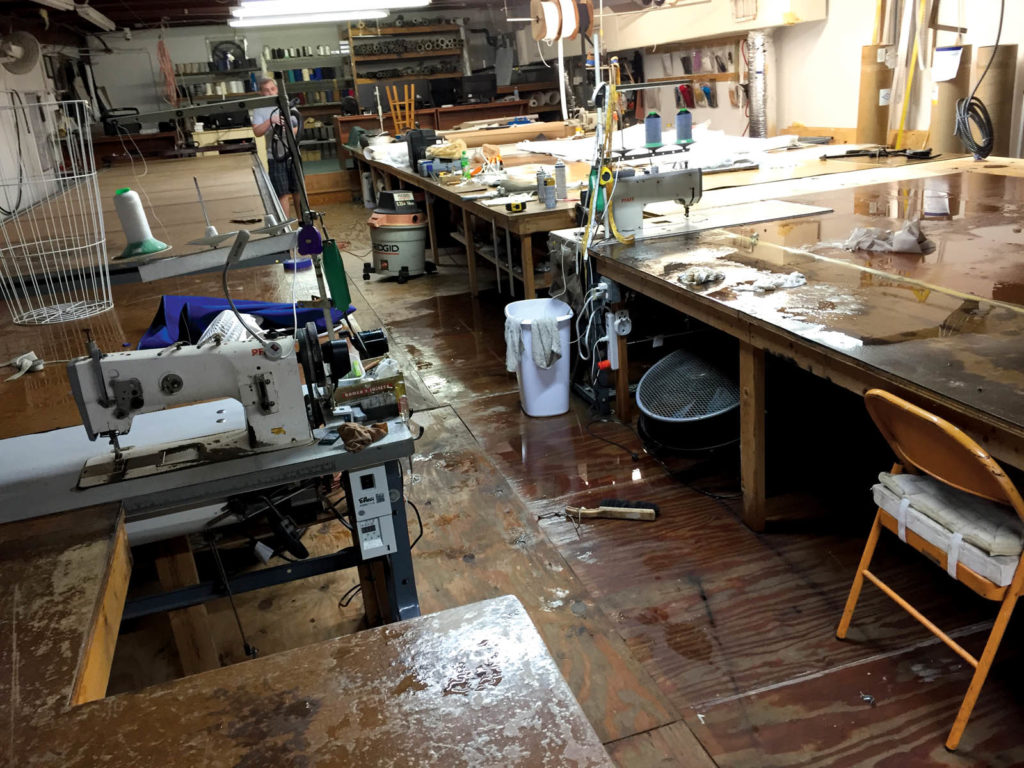
“What you do in preparation is basically going to determine whether or not you’re going to get back open at all,” says Skrzynski.
Here, in their own words, are the stories of four fabricators who have been through disasters. Their stories, as well as the tips from disaster experts in these pages, can help you prepare for and recover from disasters.
Ed Skrzynski
Skrzynski owns Marco Canvas and Upholstery LLC in Marco Island, Fla., which was damaged by Hurricane Irma.
“We took a direct hit from Hurricane Irma. We took the eye wall twice, from the front down, roofs were peeled off, buildings were torn off their slabs. There was no water, no power, and just debris everywhere.
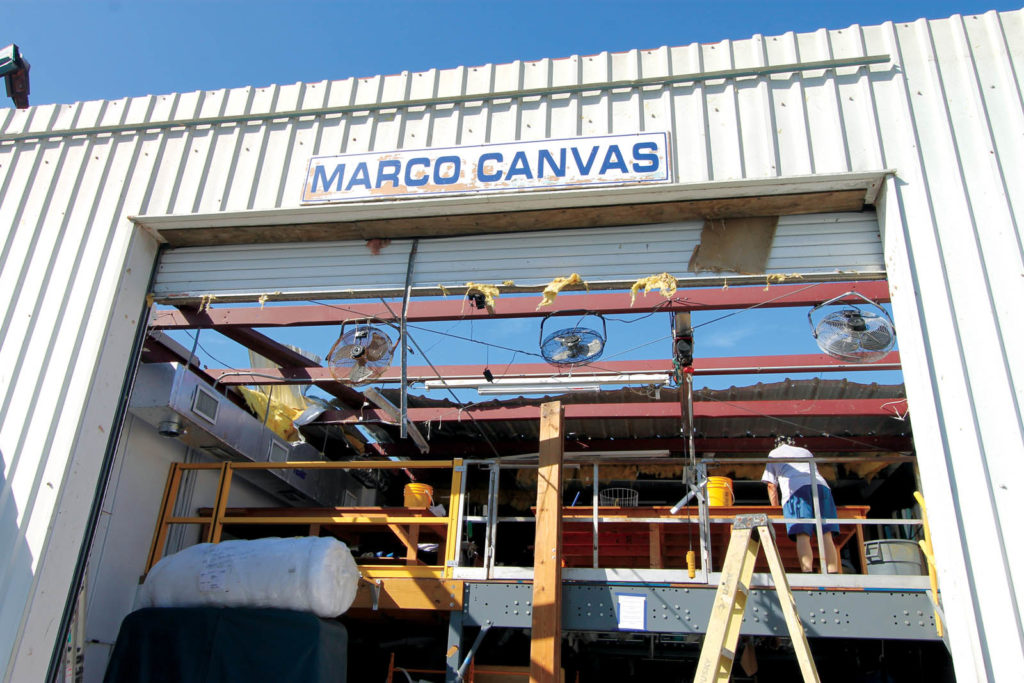
“You do what you can to prepare, but it’s not just happening at work. It’s happening at home, to employees, to vendors, to everyone. We closed down the shop three days prior to the storm to let employees go home and prepare.
“Our shop is a metal building, and the overhang was peeled back and twisted like a pretzel. The roof was rolled back about 65 feet and exposed the shop to saltwater, wind and rain. We did the best we could—boarded the shop up, braced the doors, covered the machines, put things up high—but the wind is just so powerful. But because we covered everything, we lost very little equipment.
“Afterwards, you need cash flow. We went into our computer system and looked through our database of patterns. Anybody with a pattern was first in line for replacements because we needed that cash flow. We asked vendors to extend all our terms, and they did, because of our long-standing record of paying our bills.
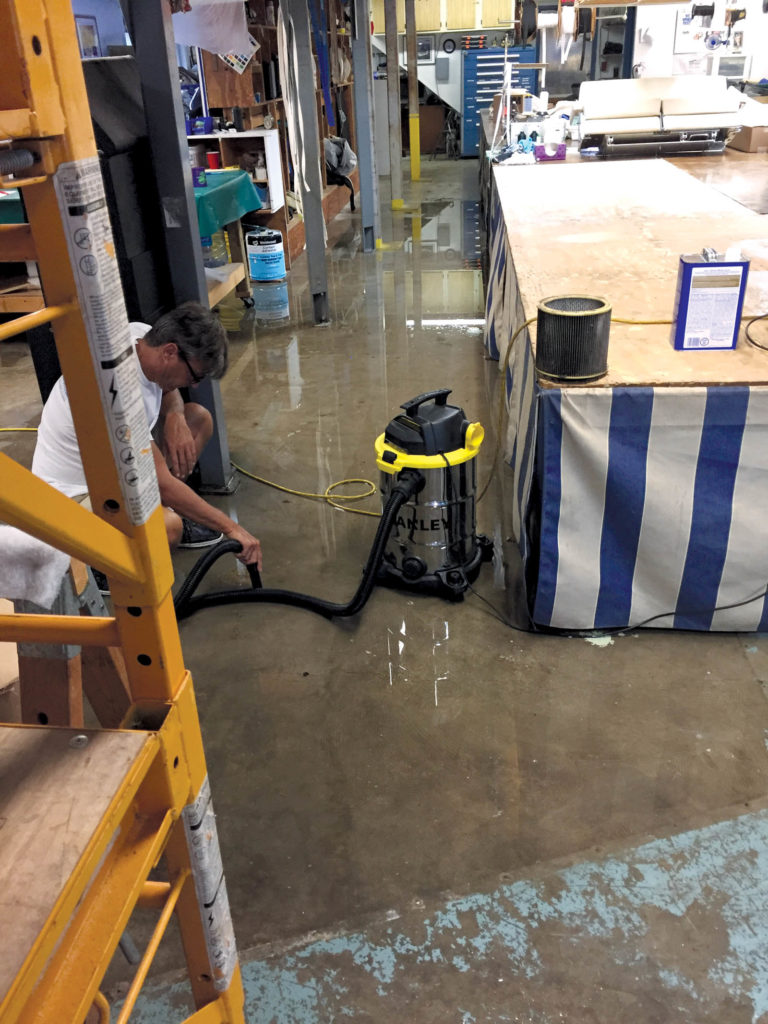
“It’s a mixed blessing, but there is a lot of work after a storm like that. Then you realize after a year or two that you’ve just done 10 years’ worth of marine canvas and awnings. You need to think ahead. What are you going to do? You better be saving your money, looking at different markets or territories, or you’re going to go out of business even though you made it through the storm.”
Randi Kaplan
Kaplan owns Kaplan’s in Easton, Pa. Her awning business was flooded three times by the Delaware River.
“Flood stage on the Delaware is 22 feet, and with one of the floods, it crested at 39 feet. We had barricaded the doors but the water came up through the foundation.
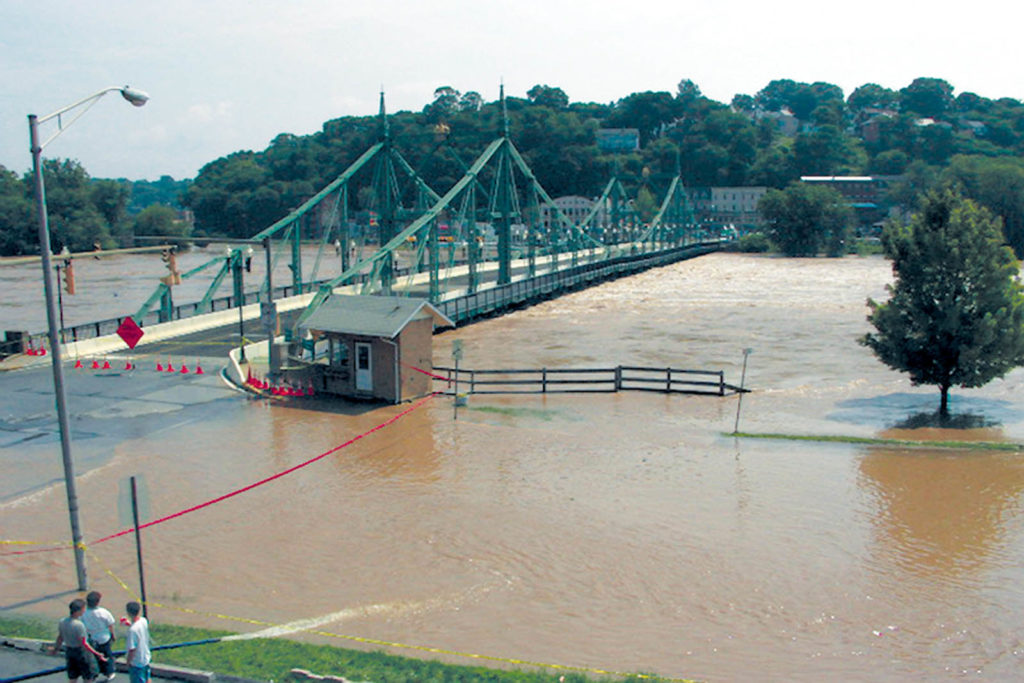
“In the first flood, there was about five feet of water in our 7,500-square-foot basement, and the second time, it rose all the way to the ceiling. By the third flood, we had installed three sump pumps and two external pumps, but we still got four feet of water.
“When we had the first flood, we had been storing awnings in the basement. To get them out, we had a human conveyer belt, handing things up to the second floor.
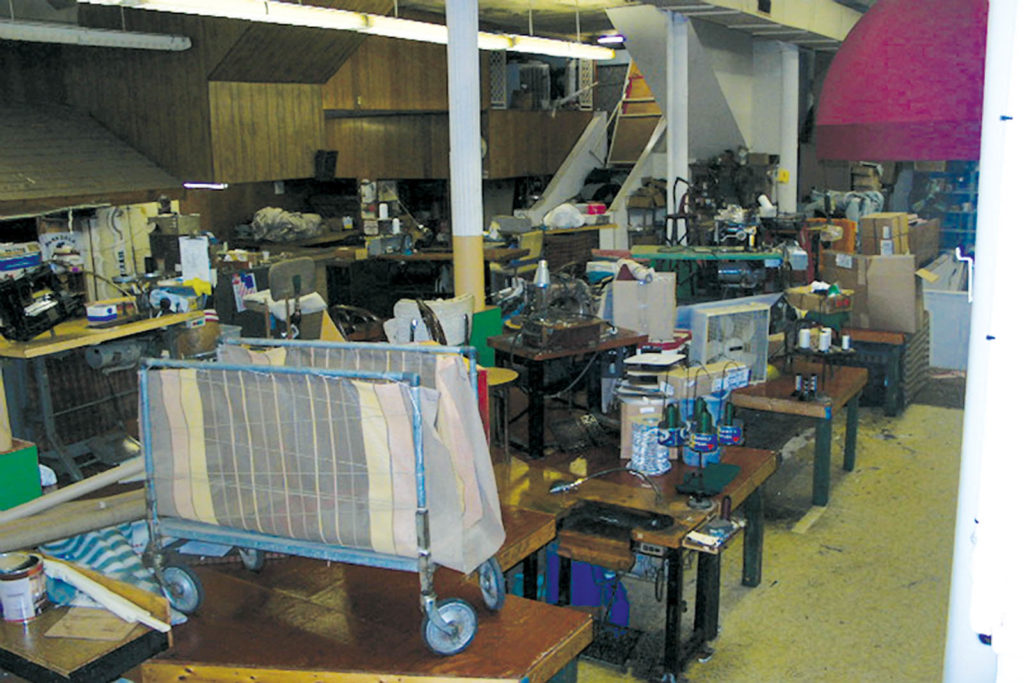
“We had old sewing machines with stands that were too heavy to move. The tables were what our grandfather had used and they were wooden. After that, every frame was metal, with plywood tops that were easy to replace. Everything was redesigned so if something were to happen, it was all easy to move.
“When we restored the basement, we replaced every electrical outlet so they were five feet off the ground. We also installed the Sheetrock® horizontally, so if the bottom part got wet, we could cut it and replace the lower section. We had a lot of things FEMA [the Federal Emergency Management Agency] wouldn’t cover, but they’re much more willing to work with you when you’re proactive in doing those things.
“We finally ended up moving to a building that was not in the floodplain with significantly higher elevation. After the third flood, it was difficult to keep going. It’s emotional. You just think you can’t go through that again. But nobody was injured, no lives were lost, and property can be replaced.”
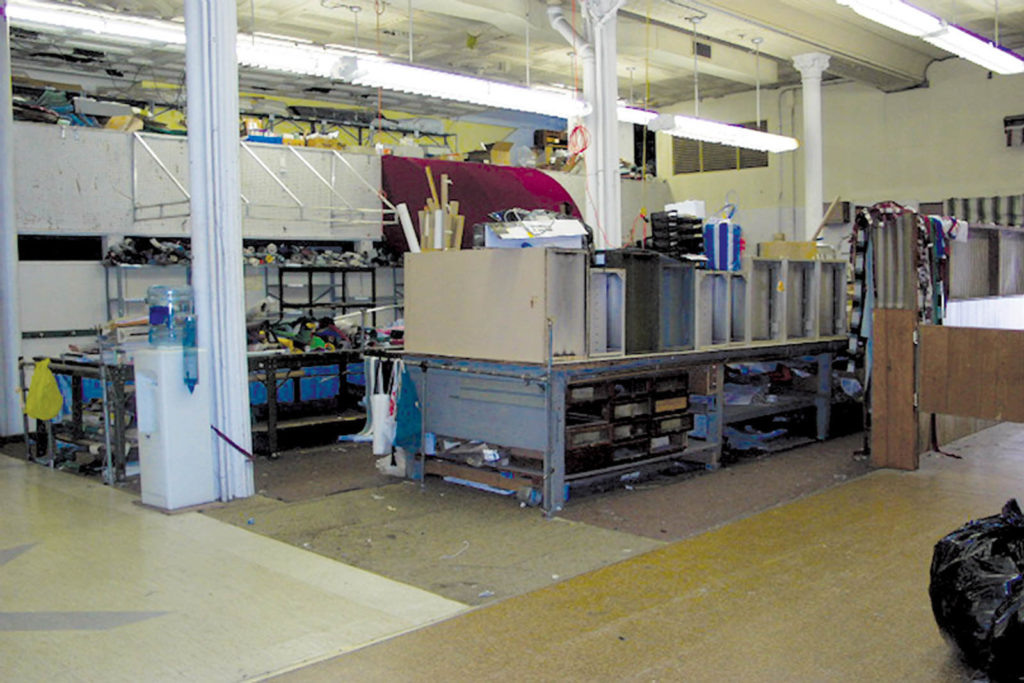
Steve Alberts
Alberts owns Oceanside Canvas in Cudjoe Key, Fla., which was damaged by Hurricane Irma.
“We didn’t have much of a plan in place, really. We’d been there for three evacuations that didn’t turn out to be hurricanes, and after a while, you start thinking it’s not that big of a deal. We had been out of town and had only four days to move all our tools and evacuate for Irma.
“The biggest issue in these storms is water damage; when half a roof is gone, that’s really from tornadoes. It would have been worse if we hadn’t moved the tools from the shop to our house, which is on stilts. The wind drives the saltwater so hard it actually sandblasts anything that’s exposed.
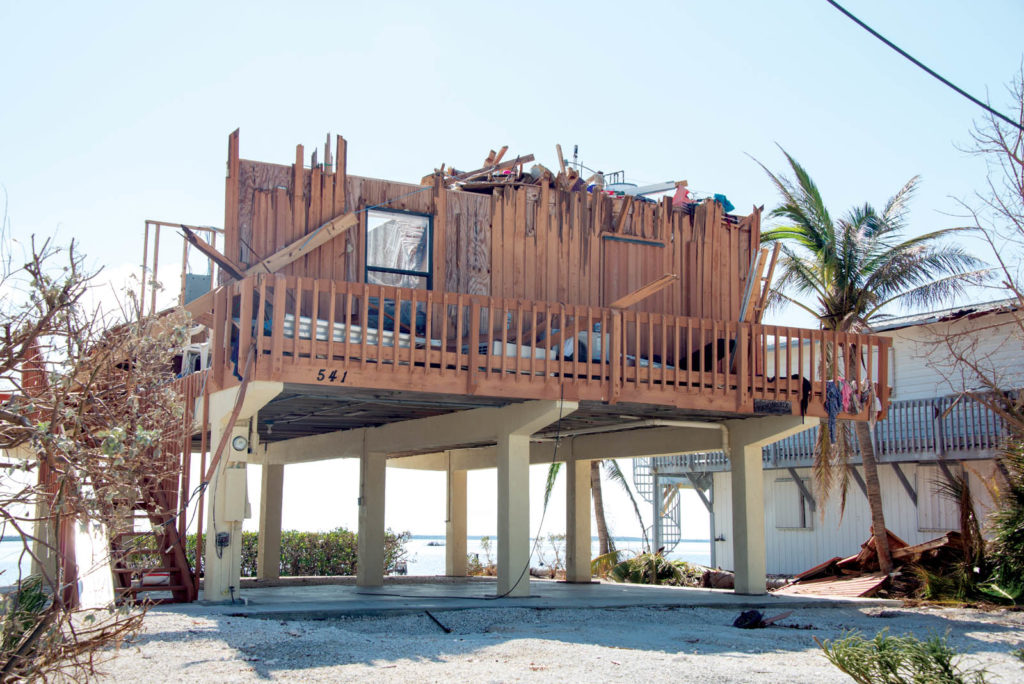
“It was hectic,” says Alberts. “It’s better to have more of a plan in place. It would be a good idea to have premade emails that you could send to customers about what to do, maybe a prewarning to give clients a week or so to prepare.
“The business interruption is tough. We were legally evacuated from the Keys for nearly a month, and that put a big halt on everything. We opened back up after two months, and I might have actually waited a few more weeks, but people were coming by wanting to get stuff done. Unless you have backup capital, it’s difficult to unexpectedly have your income halted for a couple of months.”
Jeff Kleger
Kleger is president of Jefco K. Inc. in Philadelphia, Pa. His awning business was severely damaged by fire in February 2008.
“To survive a disaster, you need to have adequate insurance. This sounds like common sense, but in the real world it does not always work out that way. Your agent may be sincere, and you may have a long-term relationship with them, but they don’t always sell you what you need. In my case, they undervalued inventory in order to present a more affordable premium; that led to problems getting enough money back to cover the lost inventory. There is much more to your business than inventory.
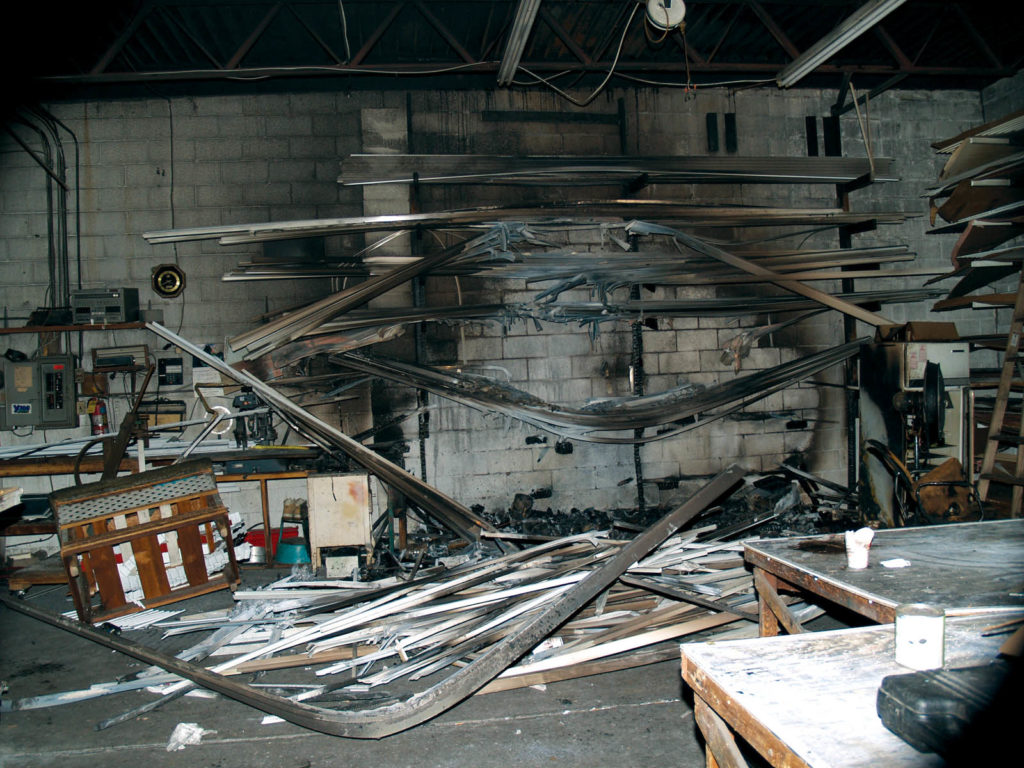
“Know what you have—not just inventory and finished products going out, but the value of your IT, office equipment, anything you can put a number on. Have photographs and purchase information to back up your claim.
“After the disaster, hire someone with experience to handle your insurance claim. Once your company is damaged, expect trouble at every turn. In my case, after moving to temporary quarters, the insurance company tried to end our business interruption coverage, even though the temporary location was not sufficient for our needs.
“Beyond insurance, you need adequate personal and business financial resources to carry you through the storm. Insurance payments will be few and far between while you and your adjuster argue with the carrier about what is covered by the policy.
“Even though you are competitive, you need to be friendly and supportive with your competition. To survive you need allies who can help you get your product out. In short, you need to create a collegial environment in which everyone in the business cares for each other. Your competitors need to understand that your survival is in their best interests.
“Be prepared for mood swings. No matter how well prepared, you will feel down and out, miserable, and like you have no funds no matter what your resources are. Money just flies out the door.
“Always bear down and press ahead. To the outside world, you must present a normal picture of business as usual. You need to continue selling products as if nothing has changed. If anyone suspects you are in trouble, you will be in trouble. You will lose everything. In order to survive, you and your employees need product to go out and money to flow in.
“Remember, you are going to get through the crisis. Nothing lasts forever.”
Jeff Moravec is a freelance writer from Minneapolis, Minn.
 TEXTILES.ORG
TEXTILES.ORG


